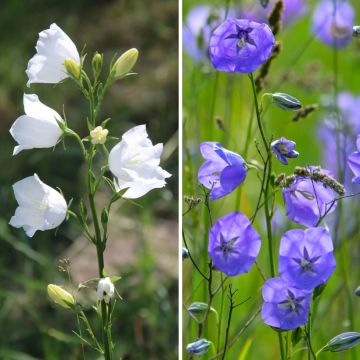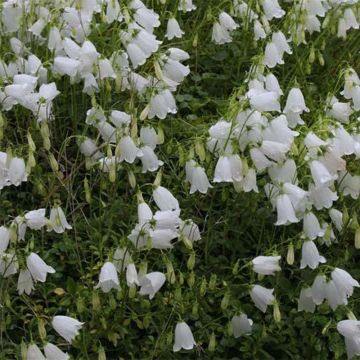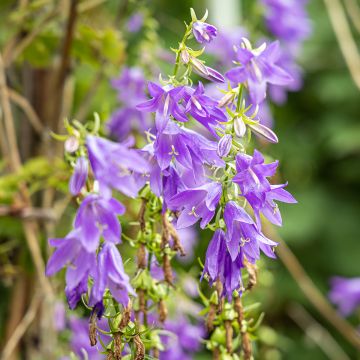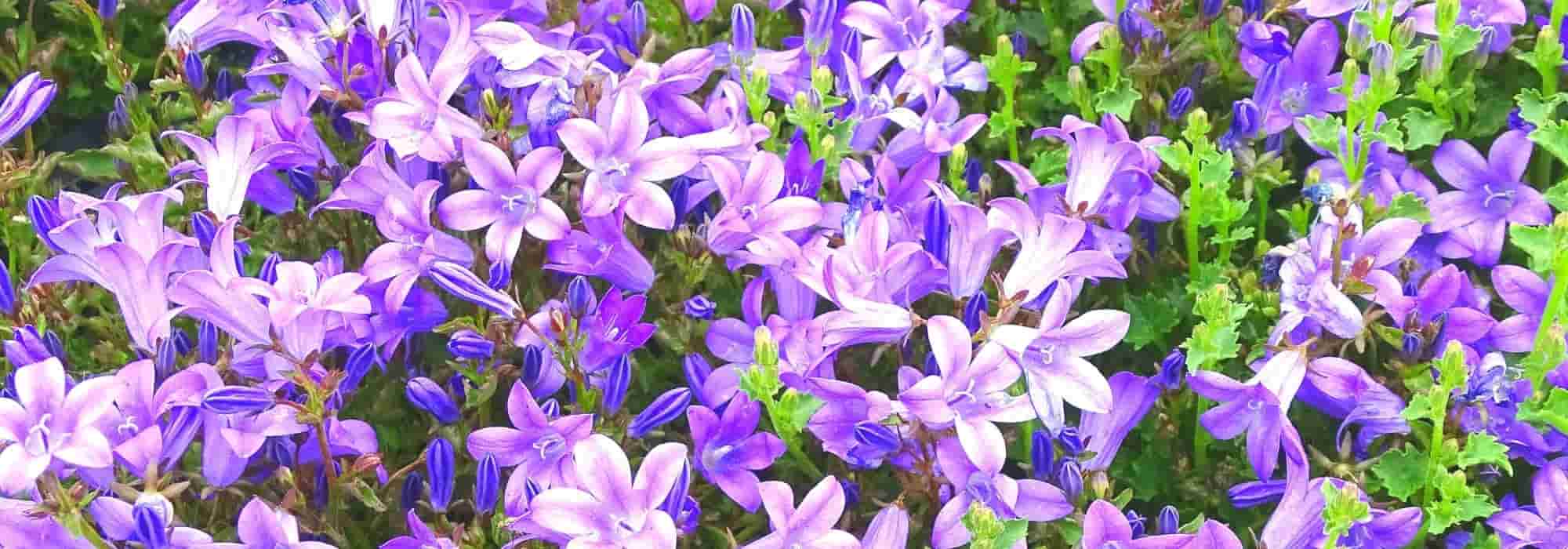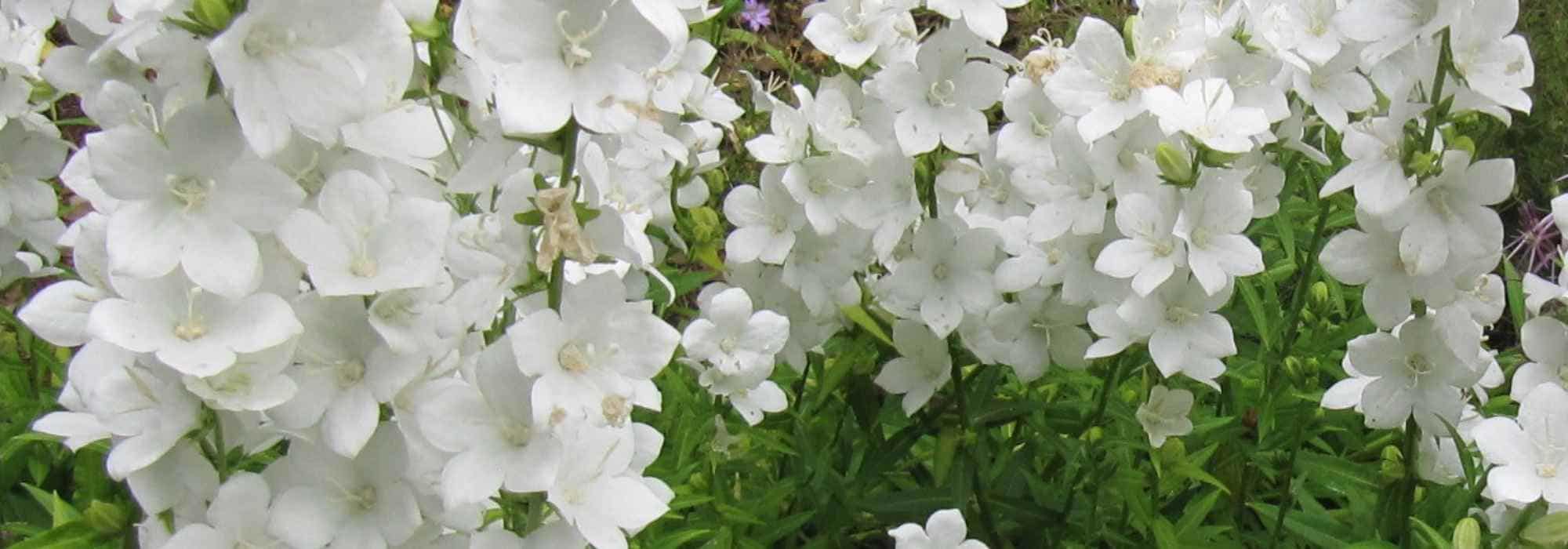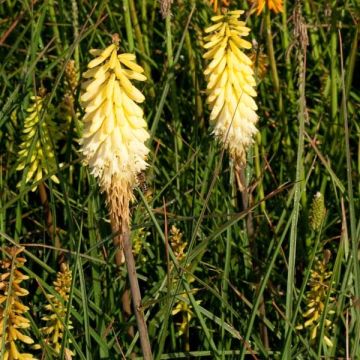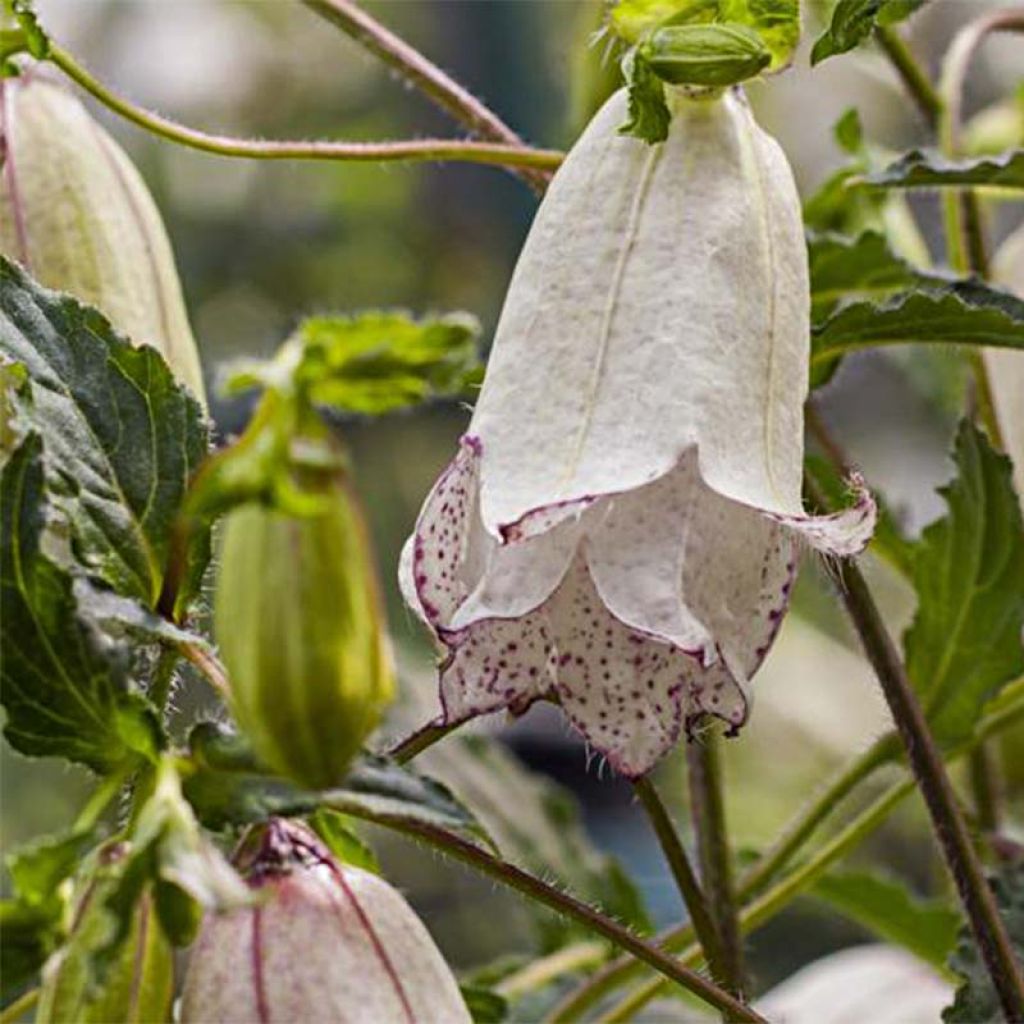

Campanula punctata Milky Way
Campanula punctata Milky Way
Campanula x punctata Milky Way
Spotted Bellflower, Dotted Bellflower
My little sweetheart, discreet in the garden, but very friendly.
Stéphanie, 29/06/2019
Special offer!
Receive a €20 voucher for any order over €90 (excluding delivery costs, credit notes, and plastic-free options)!
1- Add your favorite plants to your cart.
2- Once you have reached €90, confirm your order (you can even choose the delivery date!).
3- As soon as your order is shipped, you will receive an email containing your voucher code, valid for 3 months (90 days).
Your voucher is unique and can only be used once, for any order with a minimum value of €20, excluding delivery costs.
Can be combined with other current offers, non-divisible and non-refundable.
Home or relay delivery (depending on size and destination)
Schedule delivery date,
and select date in basket
This plant carries a 12 months recovery warranty
More information
We guarantee the quality of our plants for a full growing cycle, and will replace at our expense any plant that fails to recover under normal climatic and planting conditions.

Would this plant suit my garden?
Set up your Plantfit profile →
Description
Campanula punctata Milky Way is a brand new variety of hybrid bellflower absolutely delightful, from head to foot. Everything is beautiful about this plant, it has purple stems adorned with dark green, crispy-looking foliage and long summer flowering of beautiful double white bell-shaped flowers, washed with very pale pink and speckled with red on the inside hang from its stems. Give a special place to this romantic and precious perennial, next to your favourite plants in the garden, or in a pretty pot that you can hang on the terrace or balcony to admire up close.
The hybrid bellflower 'Milky Way' belongs to the Campanulaceae family, like Campanula punctata from which it originates. The latter is native to Korea and can also be found in Japan, northern and eastern China, and eastern Siberia, where it grows in sunny mountains. The 'Milky Way' selection has a bushy habit of about 45 cm (18in) in all directions. It spreads through short, underground rhizomes from which upright and leafy stems emerge. From June to August, it forms very beautiful pendulous, double bell-shaped flowers, 5 cm (2in) long. The flowers of this variety are very refined, white on the outside, with varying shades of pink at the base. The inside of the corolla is very pale, pearly pink, with small spots of dark pink-red. The flowering can continue into September if you regularly remove the faded stems in summer. The foliage is deciduous but persists for a long time, dark green with prominent veins and slightly hairy. The floral stems are also hairy, dark reddish-brown contrasting beautifully with the flowers. The leaves often take on a more purplish hue in autumn.
The 'Milky Way' bellflower likes sunny exposures and moist, rich, and well-drained soils. When it is happy, its rootstock can spread a little. In a wild garden or in a more romantic style, associate it with perennial geraniums, English roses, Polemonium, and lady's mantle. A pairing with Astrantia Claret and late tulip Queen of the Night is particularly successful. This lovely bellflower also performs well in a pot that can be hung at eye level. Its romantic and soft flowers are perfect for bouquets.
Campanula punctata Milky Way in pictures
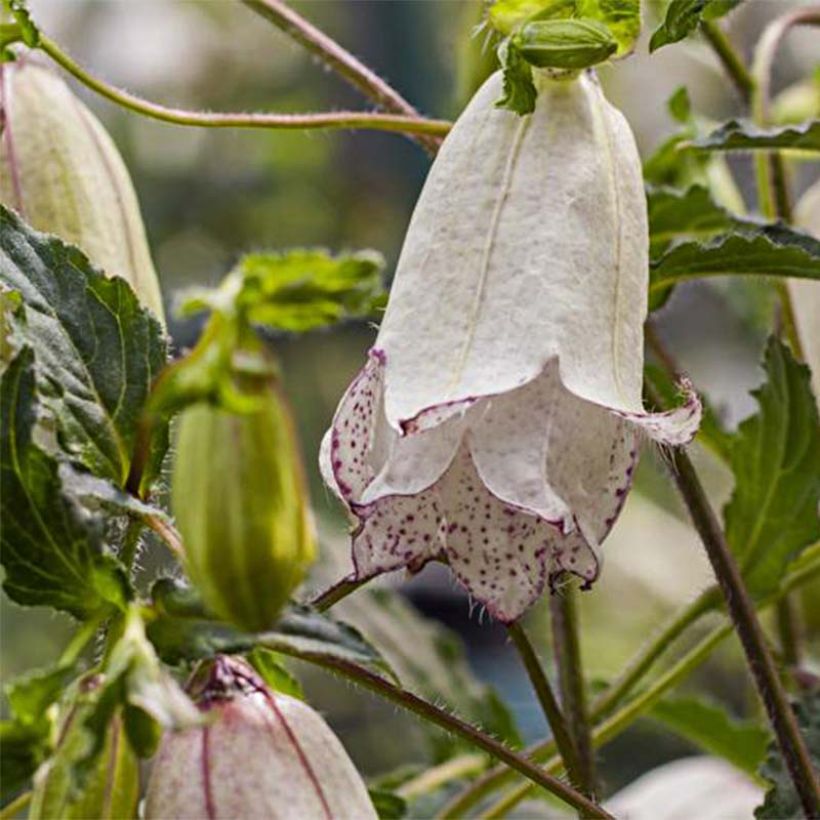

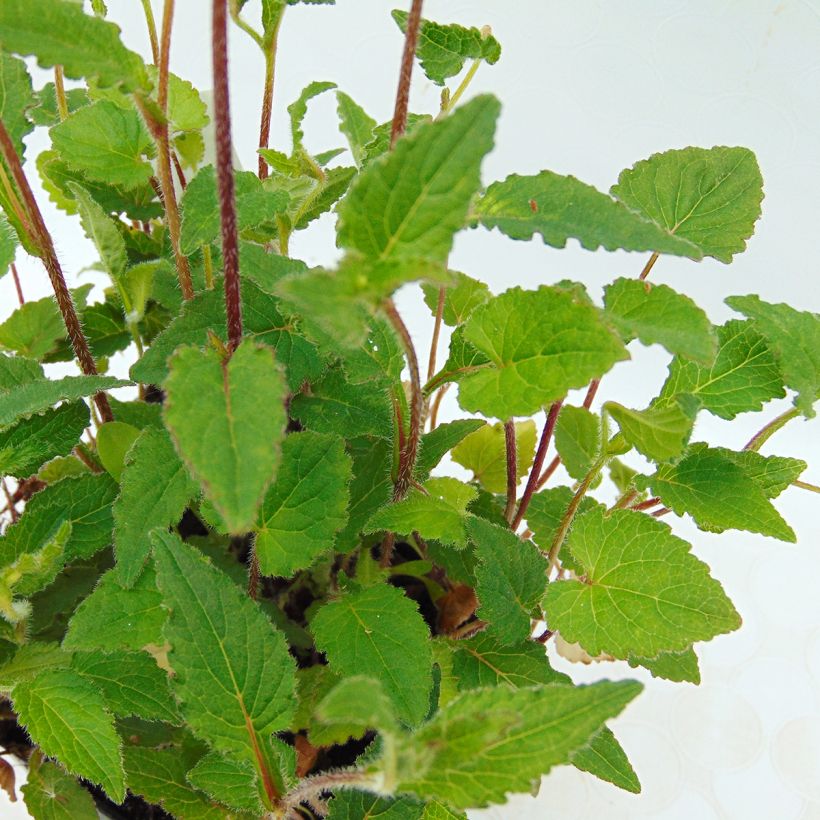

Flowering
Foliage
Plant habit
Botanical data
Campanula
x punctata
Milky Way
Campanulaceae
Spotted Bellflower, Dotted Bellflower
Cultivar or hybrid
Other Campanula - Bell Flower
View all →Planting and care
Plant your hybrid campanulate Milky Way in the sun in rich and moist soil, even limestone, well-drained and deeply worked. In heavy or limestone soil, incorporate leaf mold into the planting soil. Do not be guided by the size of the plant in the pot: give it the space you would give to a small bush, as it grows quickly! You must prune the stems after flowering to promote the appearance of new flowers in September. When planting in a pot, apply organic fertilizer at least once a year and water. This plant is perfectly hardy. Its enemies are slugs and snails, which love young spring shoots: make sure to protect them!
Planting period
Intended location
Care
Planting & care advice
-
, onOrder confirmed
Reply from on Promesse de fleurs
Similar products
Haven't found what you were looking for?
Hardiness is the lowest winter temperature a plant can endure without suffering serious damage or even dying. However, hardiness is affected by location (a sheltered area, such as a patio), protection (winter cover) and soil type (hardiness is improved by well-drained soil).

Photo Sharing Terms & Conditions
In order to encourage gardeners to interact and share their experiences, Promesse de fleurs offers various media enabling content to be uploaded onto its Site - in particular via the ‘Photo sharing’ module.
The User agrees to refrain from:
- Posting any content that is illegal, prejudicial, insulting, racist, inciteful to hatred, revisionist, contrary to public decency, that infringes on privacy or on the privacy rights of third parties, in particular the publicity rights of persons and goods, intellectual property rights, or the right to privacy.
- Submitting content on behalf of a third party;
- Impersonate the identity of a third party and/or publish any personal information about a third party;
In general, the User undertakes to refrain from any unethical behaviour.
All Content (in particular text, comments, files, images, photos, videos, creative works, etc.), which may be subject to property or intellectual property rights, image or other private rights, shall remain the property of the User, subject to the limited rights granted by the terms of the licence granted by Promesse de fleurs as stated below. Users are at liberty to publish or not to publish such Content on the Site, notably via the ‘Photo Sharing’ facility, and accept that this Content shall be made public and freely accessible, notably on the Internet.
Users further acknowledge, undertake to have ,and guarantee that they hold all necessary rights and permissions to publish such material on the Site, in particular with regard to the legislation in force pertaining to any privacy, property, intellectual property, image, or contractual rights, or rights of any other nature. By publishing such Content on the Site, Users acknowledge accepting full liability as publishers of the Content within the meaning of the law, and grant Promesse de fleurs, free of charge, an inclusive, worldwide licence for the said Content for the entire duration of its publication, including all reproduction, representation, up/downloading, displaying, performing, transmission, and storage rights.
Users also grant permission for their name to be linked to the Content and accept that this link may not always be made available.
By engaging in posting material, Users consent to their Content becoming automatically accessible on the Internet, in particular on other sites and/or blogs and/or web pages of the Promesse de fleurs site, including in particular social pages and the Promesse de fleurs catalogue.
Users may secure the removal of entrusted content free of charge by issuing a simple request via our contact form.
The flowering period indicated on our website applies to countries and regions located in USDA zone 8 (France, the United Kingdom, Ireland, the Netherlands, etc.)
It will vary according to where you live:
- In zones 9 to 10 (Italy, Spain, Greece, etc.), flowering will occur about 2 to 4 weeks earlier.
- In zones 6 to 7 (Germany, Poland, Slovenia, and lower mountainous regions), flowering will be delayed by 2 to 3 weeks.
- In zone 5 (Central Europe, Scandinavia), blooming will be delayed by 3 to 5 weeks.
In temperate climates, pruning of spring-flowering shrubs (forsythia, spireas, etc.) should be done just after flowering.
Pruning of summer-flowering shrubs (Indian Lilac, Perovskia, etc.) can be done in winter or spring.
In cold regions as well as with frost-sensitive plants, avoid pruning too early when severe frosts may still occur.
The planting period indicated on our website applies to countries and regions located in USDA zone 8 (France, United Kingdom, Ireland, Netherlands).
It will vary according to where you live:
- In Mediterranean zones (Marseille, Madrid, Milan, etc.), autumn and winter are the best planting periods.
- In continental zones (Strasbourg, Munich, Vienna, etc.), delay planting by 2 to 3 weeks in spring and bring it forward by 2 to 4 weeks in autumn.
- In mountainous regions (the Alps, Pyrenees, Carpathians, etc.), it is best to plant in late spring (May-June) or late summer (August-September).
The harvesting period indicated on our website applies to countries and regions in USDA zone 8 (France, England, Ireland, the Netherlands).
In colder areas (Scandinavia, Poland, Austria...) fruit and vegetable harvests are likely to be delayed by 3-4 weeks.
In warmer areas (Italy, Spain, Greece, etc.), harvesting will probably take place earlier, depending on weather conditions.
The sowing periods indicated on our website apply to countries and regions within USDA Zone 8 (France, UK, Ireland, Netherlands).
In colder areas (Scandinavia, Poland, Austria...), delay any outdoor sowing by 3-4 weeks, or sow under glass.
In warmer climes (Italy, Spain, Greece, etc.), bring outdoor sowing forward by a few weeks.































